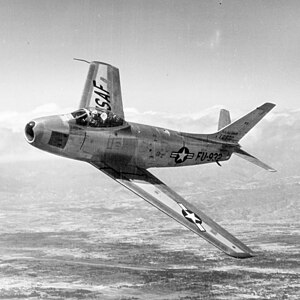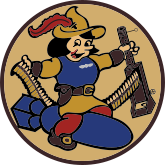
The 700th Airlift Squadron is part of the 94th Airlift Wing at Dobbins Air Reserve Base, Georgia. It operates Lockheed C-130 Hercules aircraft providing global airlift.

The 701st Airlift Squadron is part of the 315th Airlift Wing at Charleston Air Force Base, South Carolina. It operates Boeing C-17 Globemaster III aircraft providing global airlift.

The 711th Special Operations Squadron is an active reserve squadron of the United States Air Force, part of the 919th Special Operations Wing at Duke Field, Florida. The unit is operationally gained by Air Force Special Operations Command if called to active duty.

The 706th Aggressor Squadron is part of the 926th Wing at Nellis Air Force Base, Nevada where it oversees Air Force Reserve Command fighter pilots supporting the United States Air Force Warfare Center as an associate of the 57th Wing. Pilots assigned to the 706th fly General Dynamics F-16 Fighting Falcon, McDonnell Douglas F-15 Eagle, McDonnell Douglas F-15E Strike Eagle Lockheed Martin F-22 Raptor Lockheed Martin F-35 Lightning II, and Fairchild Republic A-10 Thunderbolt II aircraft.

The 531st Bombardment Squadron was a unit of the US Air Force, first activated during World War II. After training as a heavy bomber unit in the United States, it moved to the Southwest Pacific Theater, entering combat in May 1943, flying combat missions from Australia while attached to the Royal Australian Air Force, earning two Distinguished Unit Citations and a Philippine Presidential Unit Citation. In 1945 it moved forward to the Philippines, then to Okinawa. Following V-J Day, the squadron returned to the Philippines and was inactivated there in February 1946.

The 482d Operations Group is a United States Air Force Reserve unit assigned to the 482d Fighter Wing. It is stationed at Homestead Air Reserve Base, Florida.

The 448th Supply Chain Management Group is an inactive United States Air Force unit. Its last assignment was to the 448th Supply Chain Management Wing at Tinker Air Force Base, Texas, where it was inactivated on 30 June 2010.

The 319th Operations Group is a United States Air Force unit assigned to 319th Reconnaissance Wing, Air Combat Command. It is stationed at Grand Forks Air Force Base, North Dakota operating RQ-4 Global Hawk remotely piloted aircraft (RPA) in the intelligence, surveillance and reconnaissance (ISR) role.
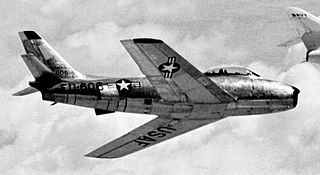
The 812th Fighter-Bomber Squadron is an inactive United States Air Force unit. Its last assignment was with 482d Fighter-Bomber Group stationed at Dobbins Air Force Base, Georgia.

The 813th Fighter-Bomber Squadron is an inactive United States Air Force unit. Its last assignment was with 482d Fighter-Bomber Group at Dobbins Air Force Base, Georgia.

The 702d Expeditionary Airlift Squadron is a provisional United States Air Force unit. It is assigned to Air Combat Command to activate or inactivate as needed. It was active at Kandahar Airfield from 2011 to 2012.

The 612th Tactical Fighter Squadron is an inactive United States Air Force unit. It was last assigned to the 401st Tactical Fighter Wing at Torrejon Air Base, Spain, where it was inactivated on 1 October 1991.

The 712th Expeditionary Air Refueling Squadron is a provisional United States Air Force unit. In February 2001, the squadron was converted to provisional status and assigned to United States Air Forces Europe to activate or inactivate as needed. It was activated in 2008 for exercises with the Hungarian Air Force.
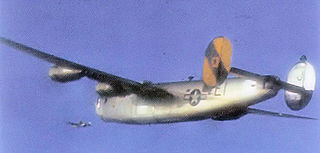
The 714th Bombardment Squadron is an inactive United States Air Force unit. It was last assigned to the 448th Bombardment Group at Long Beach Municipal Airport, California, where it was inactivated on 21 March 1951.

The 511th Bombardment Squadron is an inactive United States Air Force unit. It was last assigned to the 351st Bombardment Group at Fairfax Field, Kansas, where it was inactivated on 27 June 1949.

The 733rd Military Airlift Squadron is an inactive United States Air Force unit. It was activated as the 333rd Bombardment Squadron during World War II. After training in the United States, it deployed to the European Theater of Operations, where it participated in the strategic bombing campaign against Germany, earning a Distinguished Unit Citation. It was inactivated in England following V-E Day.

The 410th Bombardment Squadron is an inactive United States Air Force unit, formerly assigned to the 94th Bombardment Group. It was inactivated at Dobbins Air Force Base, Georgia on 20 March 1951 after being called to active duty for the Korean War, with its personnel used as "fillers" to bring other units up to strength.
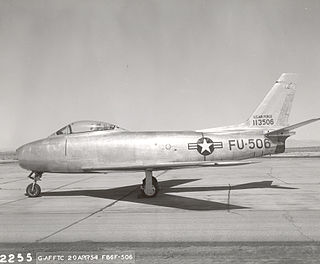
The 50th Fighter-Bomber Squadron is an inactive United States Air Force unit. It was last assigned to the 319th Fighter-Bomber Group at New Orleans Naval Air Station, Louisiana, where it was inactivated on 16 November 1957.

The 704th Fighter Squadron is an inactive United States Air Force unit. It was last assigned to the 924th Fighter Group at Bergstrom Air Force Base, Texas, where it was inactivated on 27 September 1996, when Air Force operations at Bergstrom ended.

The 705th Tactical Airlift Training Squadron is an inactive United States Air Force unit. It was last assigned to the 924th Tactical Airlift Group at Ellington Air Force Base, Texas where it was inactivated on 30 June 1976, when reserve flying operations at Ellington ended.
